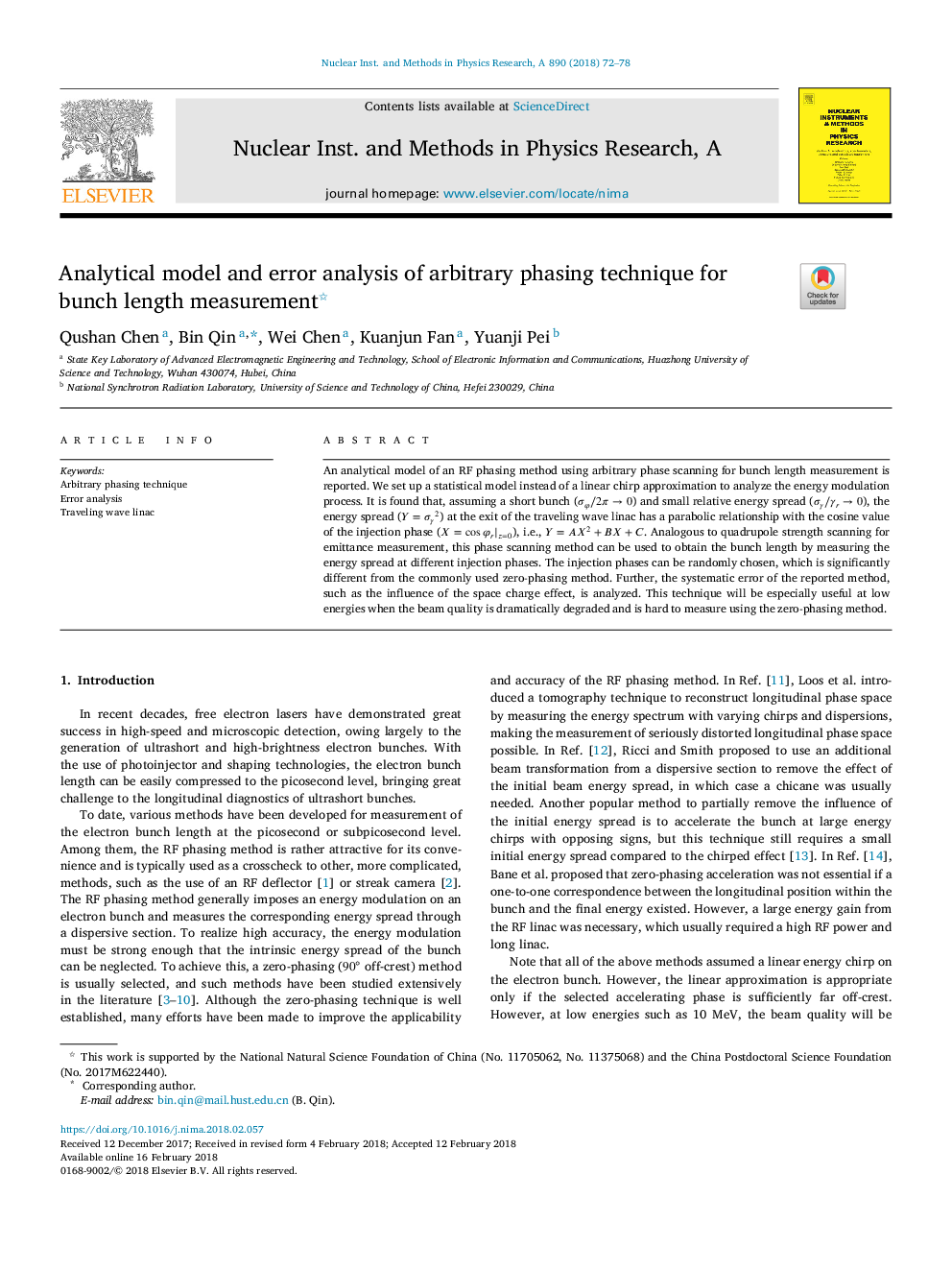| Article ID | Journal | Published Year | Pages | File Type |
|---|---|---|---|---|
| 8166425 | Nuclear Instruments and Methods in Physics Research Section A: Accelerators, Spectrometers, Detectors and Associated Equipment | 2018 | 7 Pages |
Abstract
An analytical model of an RF phasing method using arbitrary phase scanning for bunch length measurement is reported. We set up a statistical model instead of a linear chirp approximation to analyze the energy modulation process. It is found that, assuming a short bunch (ÏÏâ2Ïâ0) and small relative energy spread (Ïγâγrâ0), the energy spread (Y=Ïγ2) at the exit of the traveling wave linac has a parabolic relationship with the cosine value of the injection phase (X=cosÏr|z=0), i.e., Y=AX2+BX+C. Analogous to quadrupole strength scanning for emittance measurement, this phase scanning method can be used to obtain the bunch length by measuring the energy spread at different injection phases. The injection phases can be randomly chosen, which is significantly different from the commonly used zero-phasing method. Further, the systematic error of the reported method, such as the influence of the space charge effect, is analyzed. This technique will be especially useful at low energies when the beam quality is dramatically degraded and is hard to measure using the zero-phasing method.
Keywords
Related Topics
Physical Sciences and Engineering
Physics and Astronomy
Instrumentation
Authors
Qushan Chen, Bin Qin, Wei Chen, Kuanjun Fan, Yuanji Pei,
